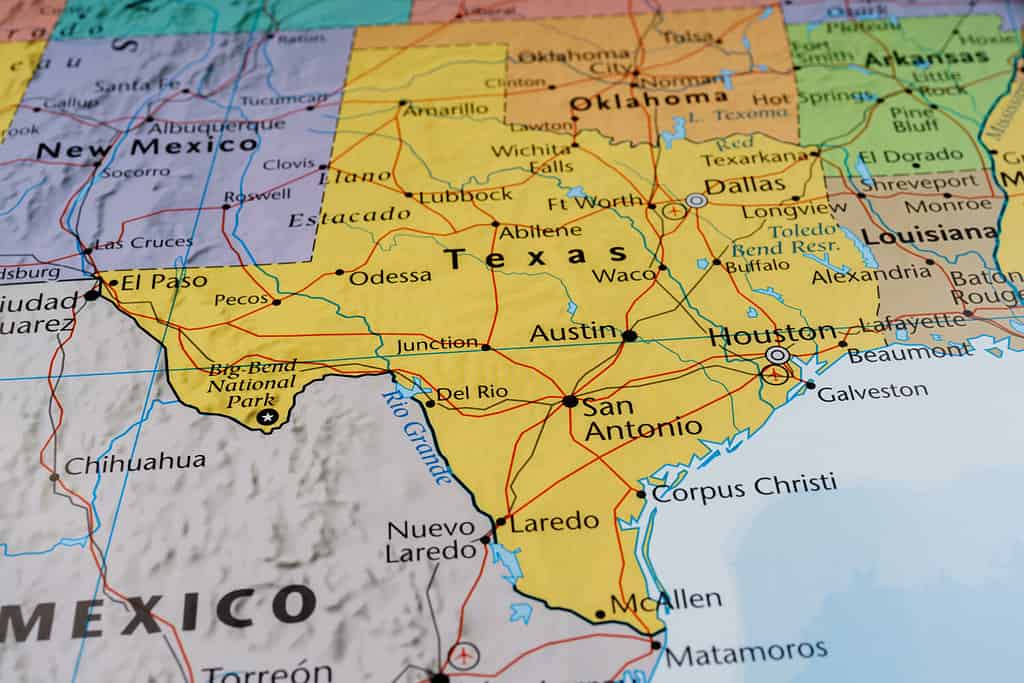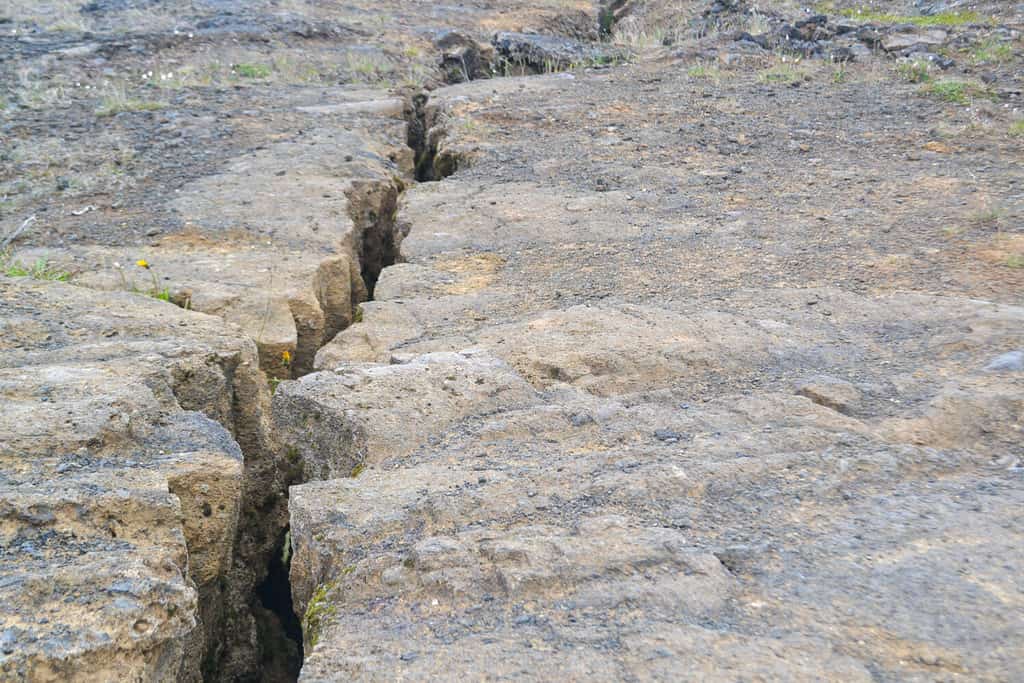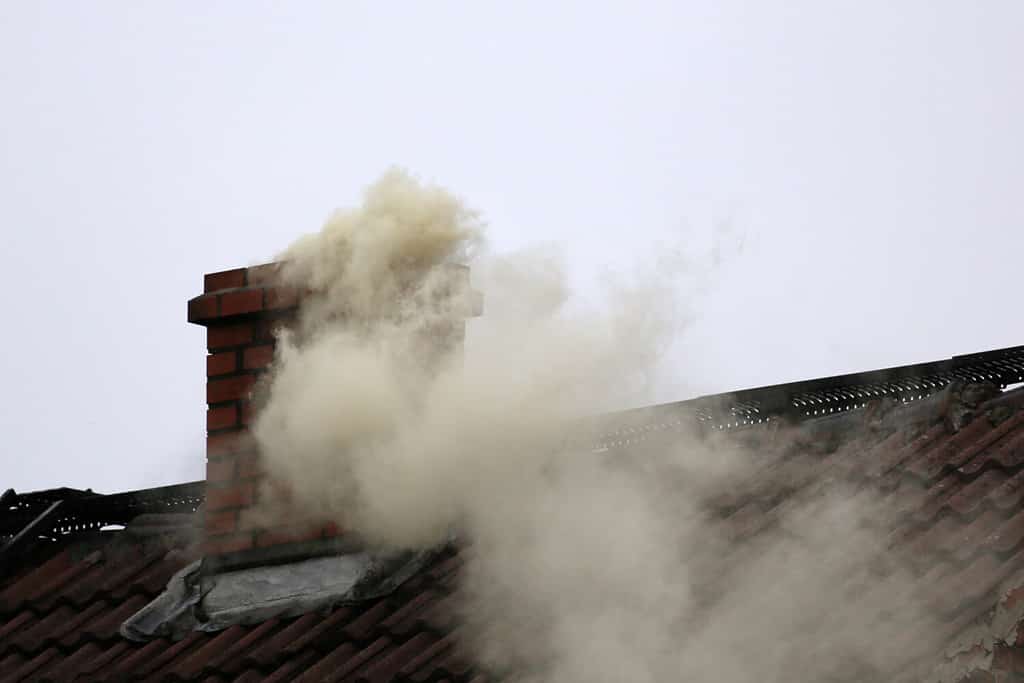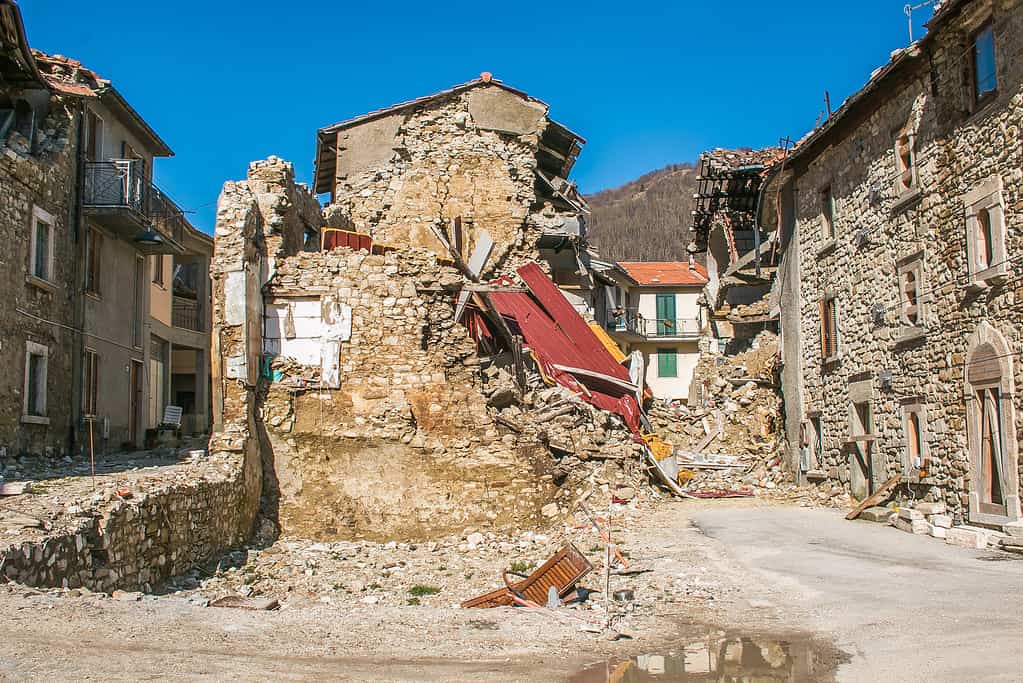Texas experiences just about every major natural disaster that the world can throw at it. The Lone Star State gets hurricanes, tornadoes, powerful thunderstorms, and even earthquakes. Although Texas is not particularly known for devastating earthquakes, the western part of the state is somewhat susceptible to them. Discover Texas’s most powerful earthquake and find out how large and powerful it was, the damage it caused, and even more!
What Was Texas’s Most Powerful Earthquake?

Valentine is about 140 miles southeast of El Paso.
©Alexander Lukatskiy/Shutterstock.com
| The 1931 Valentine Quake | |
|---|---|
| Moment Magnitude (Mw) | 5.8 to 6.4 Mw |
| Epicenter | 30.502°N 104.575°W |
| Date | August 16, 1931 |
| Intensity | VIII (Severe) |
Texas’s most powerful earthquake was a 5.8 to 6.4 Mw quake that struck on August 16, 1931. The epicenter was in the western part of Texas in a town called Valentine. Like most of the other largest and most impactful earthquakes, the 1931 Valentine earthquake struck West Texas and the northern part of Mexico.
Although the earthquake’s estimated magnitude was between 5.8 and 6.4 Mw, the United States Geological Survey lists the quake as a 5.8 Mw event. That figure still makes this quake the strongest recorded in Texas.
The earthquake hit with an intensity of VIII, or Severe, on the Modified Mercalli intensity scale. The main event occurred at 5:40 a.m. Fortunately, the foreshocks leading to the event occurred before the main shock, waking people from their sleep. That gave people time to get out of structures and possibly reduced the number of injuries and deaths from the quake.
What Caused the 1931 Valentine Earthquake?

The Valentine earthquake was caused by an oblique-slip fault.
©LittleWire/Shutterstock.com
Earthquakes may occur along many different types of faults. Texas’s most powerful earthquake was an oblique-slip fault. These faults include elements of dip-slip and strike-slip faults. Although such faults are not unusual, oblique-slip faults are only identified when both dip-slip and strike-slip elements are significant and measurable.
Scientists believe that the earthquake occurred at a depth of 6.2 miles along the Rim Rocks or Mayfield Faults.
Where Was the Epicenter of Texas’s Most Powerful Earthquake?
The earthquake’s epicenter was located at 30.502°N 104.575°W. When looking at this location on a map, it’s clear that the quake struck a rather desolate part of the state, far from large cities. The quake struck about 7 miles southwest of downtown Valentine. In 1930, this town only had a population of about 630 people.
Valentine is a part of Jeff Davis County in the far western part of Texas. The town is just about 25 miles northeast of the border with Mexico. The effects of the earthquake were detected in a wide area, including many places in Texas, New Mexico, Arizona, and Mexico.
How Much Damage Did the Earthquake Cause?

Chimneys throughout Valentine collapsed, a common occurrence during earthquakes.
©Krzysztof Winnik/Shutterstock.com
Valentine was the epicenter of the earthquake, and the damage in that area was far-reaching and severe in places. Many of the buildings in their area suffered damage as a result of the quake. Structures made of wood, adobe, and even concrete cracked and collapsed as a result of the shaking. This quake, like others, also caused chimneys to collapse throughout the region.
The earthquake caused damage far beyond the town of Valentine, though. Places throughout Presidio, Brewster, and Culberson counties also experienced damage. The shaking was felt throughout many parts of Texas and even registered far away in Houston.
The quake also caused damaged structures across the border in Mexico. However, Valentine suffered the most severe damage of any place on the map. At least, Valentine had the highest degree of reported damage at the time.
All things considered, the quake caused about $75,000 in damage in 1931, equivalent to about $1.3 million in 2023. Fortunately, the damage caused by Texas’s most powerful earthquake was limited in its severity.
The main shock was followed by aftershocks that took place over the next few days. The most powerful of these aftershocks was a 4.2 Mw event that occurred on August 18, 1931. This aftershock was strong enough to have a V, or Moderate, intensity on the Modified Mercalli intensity scale. This caused additional damage to the area along with a few more injuries.
Did Anyone Die in the 1931 Valentine Earthquake?

Nobody perished in Texas’s most powerful quake.
©Buffy1982/iStock via Getty Images
The 1931 Valentine earthquake may have been the most powerful one to strike Texas, but nobody died as a result. Several foreshocks preceded the main shock, and those events woke people in the early morning hours before the most significant part of the quake struck. People fled their homes during the foreshocks, so few people were left in the structures by the time homes started collapsing. However, some people received minor injuries during the quake. Falling building materials accounted for most of these injuries.
Texas’s most powerful earthquake was not as strong as those experienced in other states. Still, the quake was destructive and costly. Thankfully, the earthquake did not kill anyone. West Texas continues to experience more earthquakes than other parts of the massive state, but they’re rarely over a 5.0 Mw.
The photo featured at the top of this post is © miroslav_1/iStock via Getty Images
Thank you for reading! Have some feedback for us? Contact the AZ Animals editorial team.







